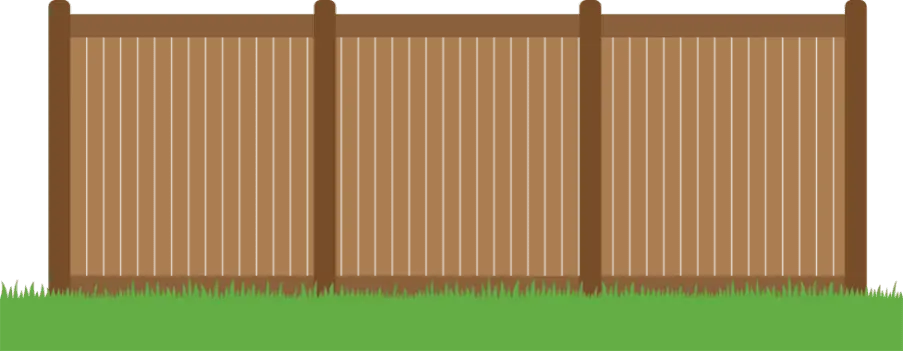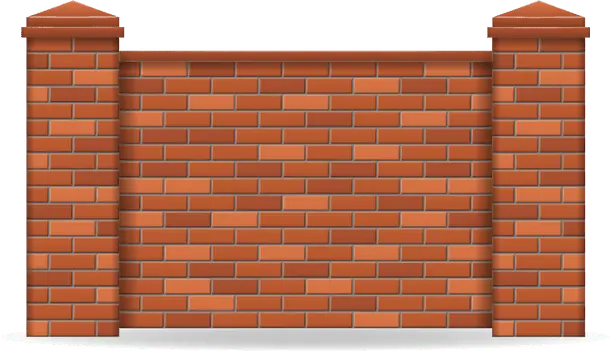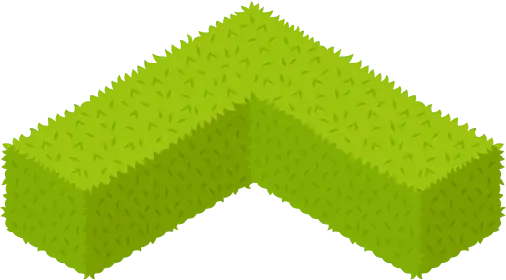Reducing noise in your backyard can make a big difference to your enjoyment of the space, especially if you live near a road. Although it’s not possible to create a fully soundproof backyard, there’s plenty we can do to block sound and reduce traffic noise.
And that’s exactly what I’ll cover below. If you’re in a rush, here’s a summary of my suggestions for how to cut down on traffic noise:
- Wood Fence
- Brick Wall
- Trees
- Vegetation
- Acoustic Fence
- Berm
- Garden Shed
- Installing a Water Feature
- Adding Backyard Speakers
- Using Grass
Before jumping into these in more detail, let’s discuss the kind of noise we’ll be trying to reduce in your backyard.
What to Know About Sound Barriers for Yards
The vast majority of noise pollution we’ll be dealing with in a backyard, patio, or garden space is airborne noise. You might find yourself dealing with some structure-borne noise if you live directly next to a busy road, but this isn’t super common.
Airborne noise, unsurprisingly, is vibrational energy (sound wave) that carries through the air. Our main way to reduce airborne noise is with mass, such as a concrete or brick wall. Adding mass constitutes the first soundproofing principle of sound blocking; learn more about the 4 different soundproofing principles here.
However, the type of mass we use also makes a difference, as we must also consider things like reflection, absorption and, to a lesser extent, dampening.
This difference will make sense once we start digging into the options below. But some factors that’ll be important for pretty much all suggestions include:
- Density and type of the material. For example, brick will reflect a lot of sound, whereas a tree will absorb sound more than reflect it.
- Height/extent of coverage.
- Distance between the noise source and the sound reduction measure. For every doubling of distance from the source, sound reduces by 6dB as per the inverse square law.
- Noise reflection – specifically, will it be reflecting into your or someone else’s backyard?
I’ll discuss these factors in more detail as we run through the suggestions, as they’re pretty important for deciding which will be the most useful for your space.
10 Ways to Soundproof a Backyard
It’s worth noting that some of these options are far easier to implement when trying to block unwanted noise in your backyard. I recommend reading through the list and seeing which will be easiest. Also, consider using more than one depending on the type and volume of noise you’re trying to reduce.
1. Wood Fence

Let’s start with an obvious suggestion: a wooden fence. Chances are that you already have a wood fence installed in your backyard. It’ll probably come as no surprise that on its own, wood doesn’t have a decent STC (sound transmission class) rating.
As such, we’ll need to supplement it with sound absorption and blocking materials. I won’t discuss this in too much detail because there’s a guide for a sound barrier below. In short, you’ll want to add materials such as mass loaded vinyl (such as this) to give the fence more mass.
If you choose to build the fence yourself from scratch, use the thickest planks you can find and arrange them with as few gaps as possible. Aim to fill gaps with wood putty before treating the fence. Also, you’ll need to aim for the best coverage possible, meaning your fence might need to be 8ft. or more in height!
2. Brick Wall

Brick is a better starting point for backyard noise reduction than wood. A brick wall can have a fairly decent STC rating. According to one chart, an 8-inch thick wall has an STC rating of 52, meaning loud sounds can be heard but are faint.
If you want to provide sound absorption (although it’s not super necessary), you could build a hollow brick wall and fill the cavity with rock wool. This’ll help to absorb sound waves, but the benefit won’t be as obvious compared to adding this to an interior wall.
Sound waves will still be able to pass over the top of the wall, but if you build it tall enough, it shouldn’t be too much of an issue. As with the wooden fence, you’ll want a brick wall that’s 7-8ft. tall at least.
Brick walls primarily block sounds and reflect them back towards the source. The result is that sounds might be distorted or amplified on the side closest to the noise source, so bear this in mind if you’re reflecting noise into your neighbor’s space.
3. Trees

Trees can be effective at absorbing sound because foliage density and surface area work in a similar way to acoustic foam. Specifically, having a large surface area causes sound waves to expend their energy as they pass through the foliage.
Helpfully, we actually have some science to back this up because trees are useful in urban planning for just this purpose. Tree belts can reduce airborne noise by up to 6dB, which might not sound like much, but it’s a noticeable difference.
However, a tree belt must be at least 45ft. thick to provide this kind of reduction! Of course, this isn’t feasible in a backyard, but a barrier of dense foliage can help dampen and absorb some sound. Combine it with a wall or fence for better results.
Something like cypress trees is a good choice, as are other evergreens, such as laurel and pine. Of course, you’ll have to wait a few years for the trees to grow, but cypress can reach up to 30ft. in height, giving you a low-maintenance sound barrier.
4. Vegetation

This option might be similar to planting trees, but here we’re looking specifically at other kinds of foliage. For example, bushes and smaller plants can help form a lower barrier than trees.
Also, the studies linked above found that a vegetation sound barrier should include lots of different types. This is to cover a full height range, increase the surface area, and increase absorption and reflection. However, as with trees alone, this won’t have a massive difference on noise pollution. You could combine a plant barrier with an absorptive or sound-blocking fence for best results.
It’s also necessary to plant the vegetation barrier as close to the noise source as possible. This is so the sound waves are more concentrated, making them easier to manage with a vegetation barrier.
Some options for a vegetation sound barrier include:
- Privet
- Boxwood hedge
- Juniper
- Holly
The most important thing to note is that your barrier must be as complete as possible, meaning no gaps. This can be difficult to maintain with plants, so you’ll have to monitor them constantly. It’s also worth mentioning that evergreens are the obvious choice here. Deciduous plants lose their leaves in the winter, meaning you’ll effectively lose your noise barrier!
5. Acoustic Fence
Acoustic fencing is a product you can buy, rather than something you make yourself. That said, you could add acoustic products to your existing fence, but this would come under the DIY sound barrier I discuss below.
Good acoustic fencing will include sound absorption and dampening materials, such as mass loaded vinyl and stone wool. For example, Rockwool makes an acoustic fence product that can reduce sound by up to 21dB. Its wood fence doesn’t look too bad, either.
The major downside with this option is that it’s expensive. However, it offers a pretty amazing level of noise reduction compared to things like trees or a brick wall. If you’re serious about reducing noise pollution in your backyard, it may be worth the price.
6. Berm
A berm is a raised strip of land, such as a bank around a river. They were also used as defensive structures around homes, which may or may not be an added bonus of using them here!
Soil (and grass) is a surprisingly good sound absorber. One study found that it could attenuate sound by as much as 25dB in the right conditions, rising to as much as 50dB if mixed with air and left undisturbed.
While you probably won’t be able to achieve these conditions in your backyard, it at least illustrates the level of sound attenuation that soil offers. The difficulty, though, is the practicality of building a berm.
For a decent level of sound attenuation, you’d want a berm that’s at least 6ft. high. This would result in a base that’s at least 12ft. wide (with a slope of 45°), which is a major addition to a backyard. If you’ve got the space, it can help reduce airborne noise quite effectively, but it takes a lot of resources to build.
But you could cut down on the height slightly by planting the top with trees and shrubs to form a vegetation barrier. Of course, you could build a barrier for blocking noise on top, but this would effectively negate building the berm in the first place.
7. Garden Shed
Building a garden shed (or outdoor office) won’t necessarily reduce traffic noise on its own. Instead, it’ll help cut down on sound reflection around your backyard. A shed will offer a level of sound blocking, but obviously you’re restricted in this by its size.
The building should be located on the side of your backyard that’s closest to the noise source if you want to use it as a sound barrier. If you want it to reduce echo around an enclosed backyard, it doesn’t matter where you build it.
8. Installing a Water Feature
Installing a water feature is less about backyard noise reduction and more about masking sound. Essentially, it’ll act as a source of white noise to reduce the amount of road noise you can hear in your backyard.
For effective sound masking, you’ll want water features as close to your seating area as possible. This is so the water sound is louder compared to the noise pollution.
Unsurprisingly, you’ll want a water feature that’s as loud as possible. Waterfalls and fountains are good options, with streams less so. Just aim to make it as bubbly as possible – prioritize falling and splashing water over normal running water.
9. Adding Backyard Speakers
This option also works on the idea of masking sound, except this time it uses outdoor speakers. There isn’t much that needs to be said about outdoor speakers – the concept is fairly self-explanatory.
Make sure you position them between you and the noise source, ideally pointing inwards towards where you plan to sit in your garden. What audio you play is up to you. White noise is a good option if you just want background sound, but you could obviously play some music too.
10. Using Grass
By this, I don’t mean normal green grass. Instead, we’re looking at ornamental grasses, such as sedge. It can grow very tall (10-12ft.) and has a wide spread, so takes up a lot of space.
While it won’t absorb loads of sound, it’s more about masking incoming noise pollution. Sedge makes a rustling sound when the wind blows through, which will hopefully be more noticeable than the traffic noise!
As with other sound-masking options, plant it close to your seating area so you’ll hear wind blowing over road noise. Another suggestion that works in a similar way is wind chimes.
How Do I Build a Sound Barrier in My Backyard?
Building a DIY sound barrier in your backyard isn’t too difficult, provided you’ve got the space. We’ll work mainly with mass for blocking sound, as most absorptive materials aren’t suitable for outdoor use. You could add something like rock wool, but it’d need to be completely enclosed and watertight.
Alternatively, you could use a barrier to block noise coming from things like pool pumps or HVAC units. If you want to build a HVAC enclosure, I recommend checking out my guide for how to build a generator enclosure. It’ll follow similar design principles, except it’ll likely be 3-sided rather than 4.
For an effective sound barrier, you’ll need:
- Fencing materials (wood is an acceptable base)
- Mass loaded vinyl (such as this)
- Acoustic caulk (such as this)
- Nails or screws
- Saw, screwdriver, hammer
The steps are as follows:
1. Set up support posts
I won’t go over this step too much, as this video will give you an idea of how to set fence posts. Make sure they’re suitably sunk into the ground – you could even use some concrete to hold them in place.
2. Build your panels
This step will be easiest if you start with ready made fence panels. As I suggested above for using a wooden fence, you’ll want them to be as tall as possible. I’d recommend a minimum height of 7ft.
Seal any gaps you can see with your acoustic sealant. All the panels will likely have gaps in them, so make sure you check them thoroughly. Although having gaps won’t make a massive difference, it’ll reduce the effectiveness of your soundproof panels.
Next, add your mass loaded vinyl. It’s easiest to fix it to the panels using nails. While these will add holes, they won’t be a major issue. Make sure the entire panel is covered in a layer of MLV.
Seal the edges of the MLV using more acoustic sealant. You could add a second layer if you wish, but be aware it’ll make the panels very heavy. After all, MLV can weigh as much as 2lbs. per square ft.
If you wish, you could add another layer of wood panel over the MLV. It’s not completely necessary but does look nicer and will give you something to grow plants up.
3. Hang the Panels
Finally, hang the panels from the support posts. This is generally done using long screws – you’ll need even longer ones to compensate for all the extra material you’ve added.
Fix the panels in at least 3 places: top, middle and bottom. Provided your posts are sturdy, they should hold the weight fine.
Related Backyard Soundproofing Questions (FAQ)
Can you soundproof an outdoor area?
The only way you can completely soundproof an outdoor area is to turn it into an indoor area! Because sound travels through the air, outdoor spaces will always let in some noise pollution. However, you can drastically reduce noise pollution by building a suitably tall barrier.
What type of fence is best for soundproofing?
Masonry (brick or concrete) is the best type of fence for soundproofing. Its thickness and density make it far better than wood, vinyl or chain link. However, if you want to use wood, make sure you add plenty of sound-blocking materials.
How effective are sound barrier fences?
Provided they use the right materials, sound barrier fences could reduce noise pollution by as much as 28dB. This is quite a significant level of sound reduction. It’s essentially the difference in volume between a quiet refrigerator and heavy city traffic.
How do I stop neighbors’ noise in my yard?
The best way to stop your neighbors’ noise in your yard is by building a sound barrier or adding noise-blocking materials to a fence. However, the effectiveness will depend on the location and volume of the noise. Provided it’s nothing major, a simple brick wall or mass-enriched wooden fence will work fine.
Final Thoughts on Creating a Soundproof Backyard
So there you have it, 10 ways to reduce noise pollution in your backyard. Although some options are easier and more effective than others, there should be at least one here that’ll work for you.
As I mentioned, think about the size of your outdoor space and the type and location of the noise before you choose an option. For example, a vegetation barrier is more helpful for concentrated sound waves, whereas a tall soundproof fence will help for diffuse sound waves.
Do you have any other suggestions for reducing traffic noise in a backyard? If so, I’d love to hear from you in the comments below.


